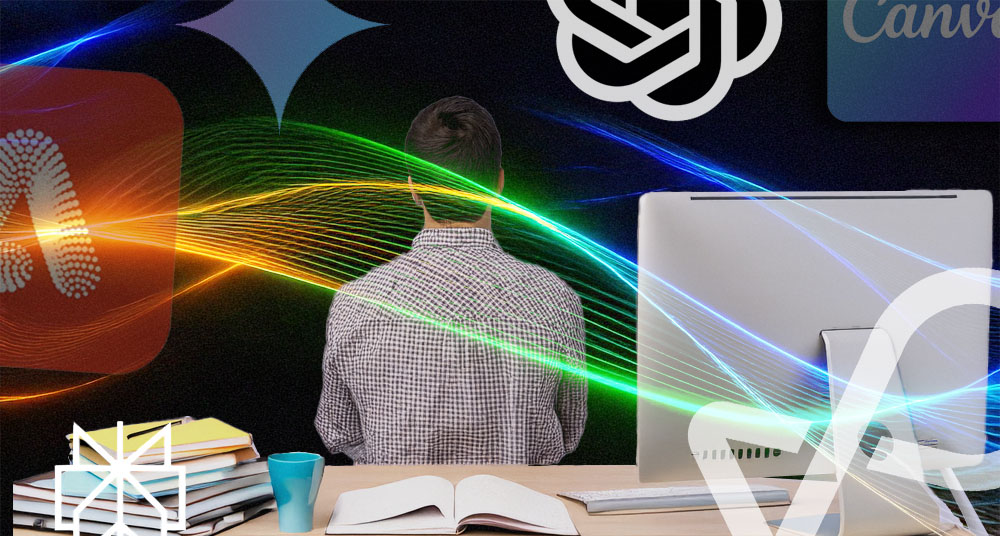Evolve or Get Left Behind?
Graphic design and art direction have long relied on a mix of technical skill, natural talent, and raw creativity. Traditionally, college programs nurtured this blend, preparing students to start in junior roles where they learned the ropes under seasoned professionals. Entry-level designers would gradually take on more responsibility, growing into senior roles through hands-on experience.
But the landscape is shifting. Today, AI tools are increasingly capable of handling the very tasks that once served as learning opportunities for junior designers. It’s efficient and cost-effective for companies—but it raises important questions. How will new designers build foundational skills if those entry-level tasks are now automated? Will these roles even be necessary in the near future?
To explore this, I consulted Perplexity.AI, a tool known for its candid, data-driven insights (it does generate some excellent reference material for additional reading). The answer was sobering: much like blacksmiths, typesetters, and darkroom assistants, today’s graphic design students may need to rapidly adapt or risk becoming obsolete. Here is what Perplexity had to say (it seemed appropriate to let an AI comment on AI, poetic even):
From the website Perplexity.AI
AI enterprise creative design software from companies like Adobe is significantly automating the production of marketing and advertising materials, both digital and print, from a single original creative asset. This automation is already having a profound impact on the roles traditionally filled by junior-level designers and interns.
Key Impacts:
-
-
- Automation of Routine Tasks: Generative AI tools, such as those integrated into Adobe’s Creative Suite, now automate many of the repetitive and production-oriented tasks that were once the domain of junior designers and interns. These include resizing assets, adapting layouts for different platforms, image editing, background removal, and even generating entirely new marketing pieces based on brand guidelines.
-
-
-
- Reduced Demand for Entry-Level Roles: Industry reports and expert commentary indicate that as AI handles more of these foundational production tasks, the need for junior designers and interns to execute them is diminishing. Senior designers can now accomplish more with less support, as AI accelerates the workflow and automates lower-level tasks.
-
- The World Economic Forum’s Future of Jobs Report 2025 notes that 40% of employers expect to reduce their workforce where AI can automate tasks, with entry-level creative roles among those most at risk.
-
- Reduced Demand for Entry-Level Roles: Industry reports and expert commentary indicate that as AI handles more of these foundational production tasks, the need for junior designers and interns to execute them is diminishing. Senior designers can now accomplish more with less support, as AI accelerates the workflow and automates lower-level tasks.
-
-
-
- Shift in Required Skills: The creative workforce is evolving. Junior roles that focused on production are becoming less intrinsic to the process, while new opportunities are emerging for those who can leverage AI tools, oversee creative strategy, or focus on higher-level conceptual and brand work. However, this shift presents challenges for early-career professionals seeking to gain experience and build portfolios, as traditional entry points are shrinking.
-
-
-
- Potential Pipeline and Diversity Concerns: The reduction in junior and intern roles could create a talent pipeline problem, limiting opportunities for new entrants to gain industry experience and potentially impacting diversity and social mobility in creative fields.
-
Perplexity’s Conclusion:
Yes, the rise of AI-powered creative design software is making junior-level designers and interns less intrinsic to the production process of marketing elements in ad campaigns. While this technology increases efficiency and allows for greater personalization and scale, it also reduces the volume of foundational tasks that have historically provided early-career designers with essential experience.
The industry is likely to continue shifting toward roles that require strategic, conceptual, and AI-augmented creative skills.
Thoughts
On the pessimistic side, raw talent and traditional training alone may no longer be enough. To thrive, the next generation of designers must evolve alongside technology—or risk being left behind.
On the optimistic (not pragmatic) side, while the number of roles dedicated solely to routine tasks may decrease, the nature of graphic design roles is evolving rather than disappearing. We, the human designers, remain essential for creative direction, strategy, storytelling, and ensuring emotional resonance. These are areas where AI currently falls short (I’m certain you can find some example online, maybe some ads from around Christmas of 2024).
In the end it’s just a new tool… as long as we use it as one.
RM

